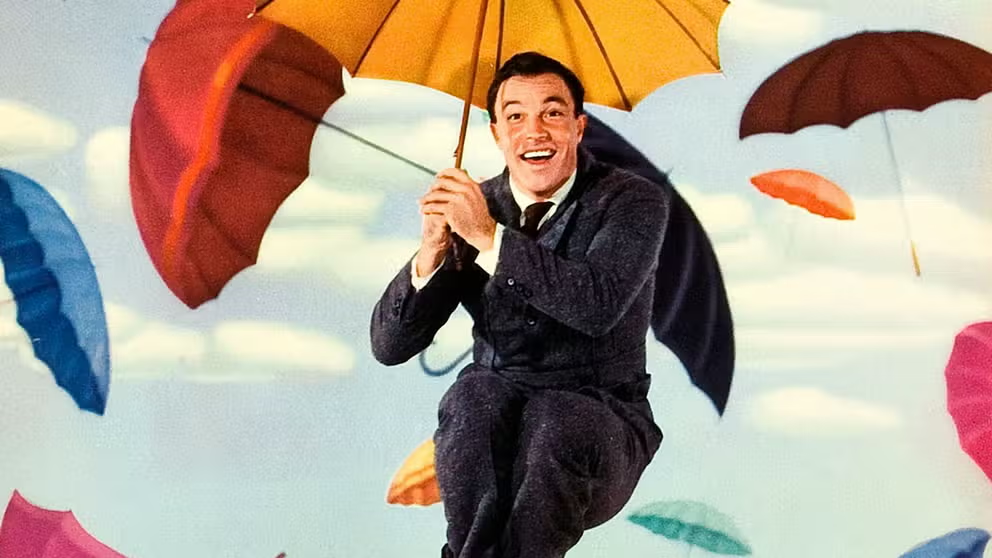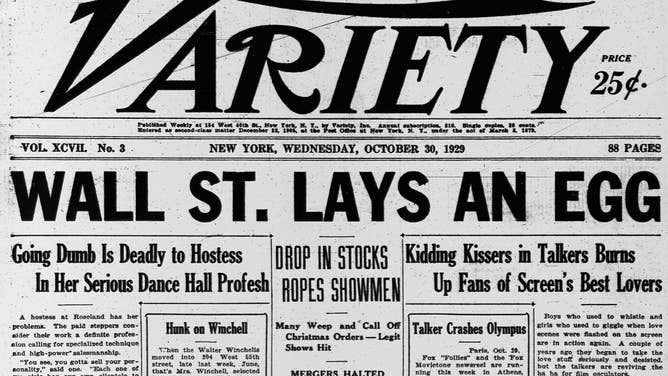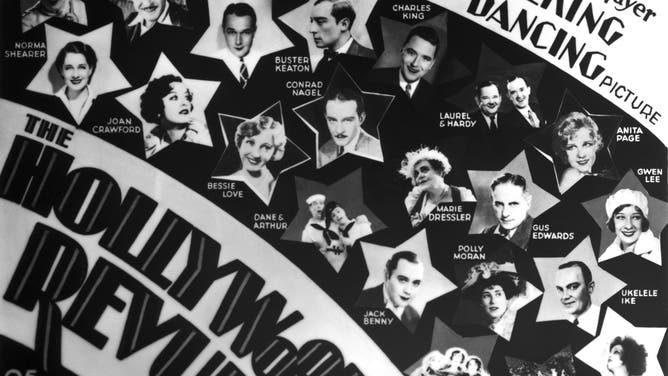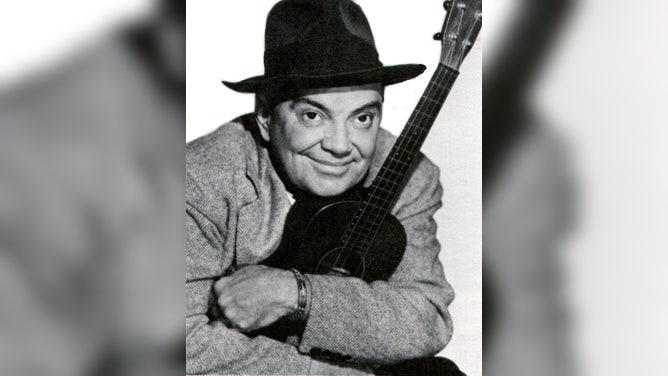How ‘Singin’ in the Rain’ captured such a glorious feeling
Set in the 1920s, the movie and eponymous song tell a tale of love in changing times
Why Singin' in the Rain is still magical after 70 years
While a downpour might not be a conventional setting for an outpouring of love, this scene in
It’s perhaps one of the most iconic scenes in cinematic canon: a smitten Gene Kelly, swinging on a lamp post and singing his heart out, all while evening raindrops glitter and fall all around him.
While a downpour might not be a conventional setting for an outpouring of love, this scene in "Singin’ in the Rain" shows how happiness can shine through even the darkest and dreariest of times.
Over 20 years before the movie hit the silver screen, its title song was born on the eve of one of the nation’s darkest times as the Great Depression lurked on the horizon.
But like all storms, it too passed, giving way to a revival of the timeless song in the form of a timeless movie about such a glorious feeling.
Song before the storm
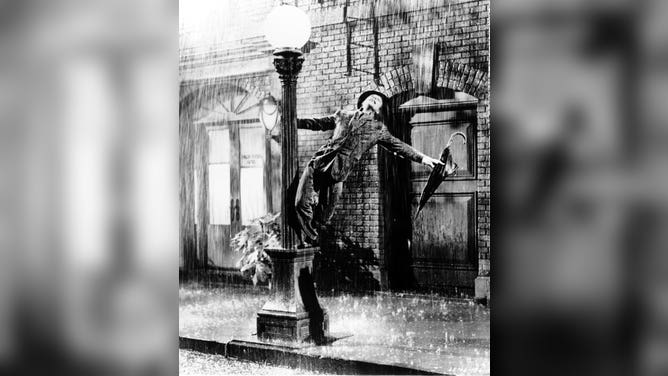
A production still of Gene Kelly performing song "Singin' in the Rain".
(Michael Ochs Archives / Getty Images)
"As soon as I hear the song bits of the movie start going through my head, and I always remember just how good I always feel when I see this movie," said George Willeman, the Nitrate Film Vault Leader at the National Audiovisual Conservation Center for the Library of Congress.
"It's such a delight as a movie, and the song just adds to it."
"It's a song from the 20s. It's used in a movie from the 50s, about the 20s. But it gives you a feeling that I think everybody understands," said Matthew Barton, the curator of recorded sound at the National Audiovisual Conservation Center for the Library of Congress.
"You don't have to be from those eras to enjoy it, to appreciate it."
The song "Singin’ in the Rain" was written by composer Arthur Freed and lyricist Nacio Herb Brown.
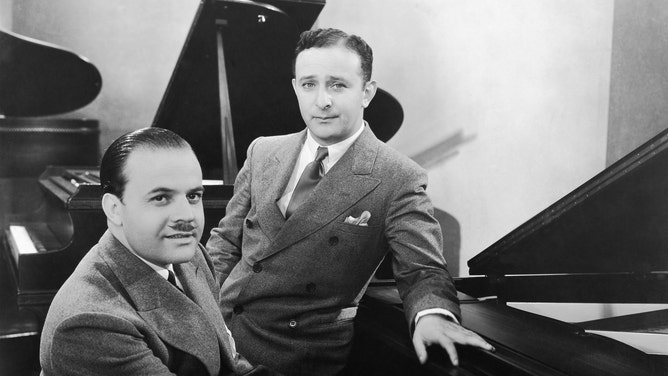
Nacio Herb Brown (left) and Arthur Freed (right) sit at a piano.
(John Springer Collection / Corbis / Getty Images)
According to Barton, Brown was inspired by his own love life, as he tried to capture his feelings for girlfriend Dorothy Eaton in his lyrics.
"He had a new love. Apparently, it didn't last, but he felt good enough to write a song about it," Barton said.
The song made its movie debut in the film "The Hollywood Revue of 1929," sung by actor Cliff Edwards or "Ukelele Ike."
"It premiered in June of 1929, and the song is a hit in the summer of 1929 — and we know what happens in October 1929," Barton said.
Everything changed.
The Roaring ‘20s were brought to an abrupt halt as the nation’s economy took a historic downturn and ushered in years of widespread famine and poverty.
So despite the popularity of "Singin’ in the Rain" in 1929, the Great Depression stole the show; and like the hope and prosperity that marked the ‘20s, the hit song too faded away into memory.
Precip and production
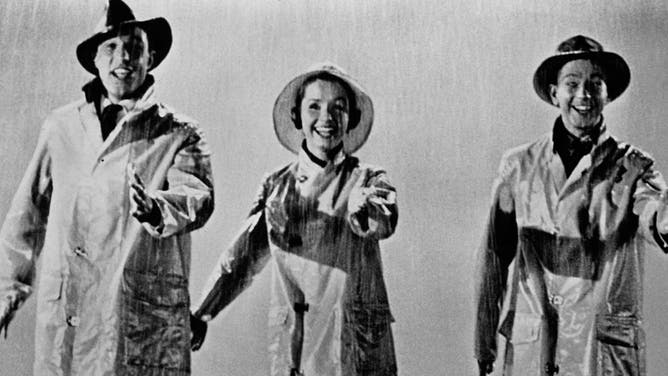
Gene Kelly, Debbie Reynolds and Donald O'Connor in "Singin' in the Rain".
(Film Publicity Archive / United Archives / Getty Images)
"Singin’ in the Rain" would take over 20 years to find its way back into the limelight, and it did so by going back on the silver screen.
The song’s original co-writer Arthur Freed had become a film producer at the movie studio Metro-Goldwyn-Meyer (MGM). According to Willeman, the "Freed Unit" at MGM was largely producing musicals based on the lives of composers, so Freed decided to make a musical about two composers he was quite familiar with.
"This one was Arthur Freed basically wanting to toot his own horn and Herb Brown's own horn because all the songs in 'Singin' in the Rain' are written by these two gentlemen," Willeman said.
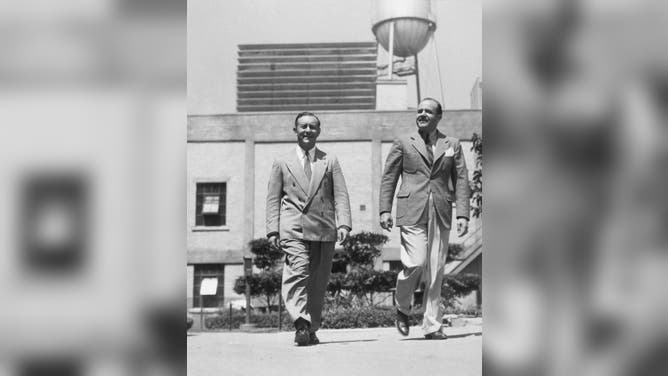
Arthur Freed (left) and Nacio Herb Brown (right) stroll on the MGM backlot circa 1935 in Culver City, California.
(Donaldson Collection / Getty Images)
The songs were then worked into a story set in the 1920s. It followed three actors navigating Hollywood as the film industry shifted from silent moving pictures to talking pictures ("talkies"), or movies with sound.
Of all the songs in the movie, the tune that has become the most well-known is the movie’s namesake — perhaps largely thanks to a scene featuring the dancing heels of a lovestruck Gene Kelly.
"This is the centerpiece of the film," Willeman said. "The filming of it is pretty amazing because it's all on a backlot."
According to Willeman, the nighttime "Singin’ in the Rain" scene was shot in the daytime, but to make it appear as if it were night, the film crew strung black cloth over a large outdoor set. And to make the "rain" easier to see around Gene Kelly on the dark set, the crew added milk to it.
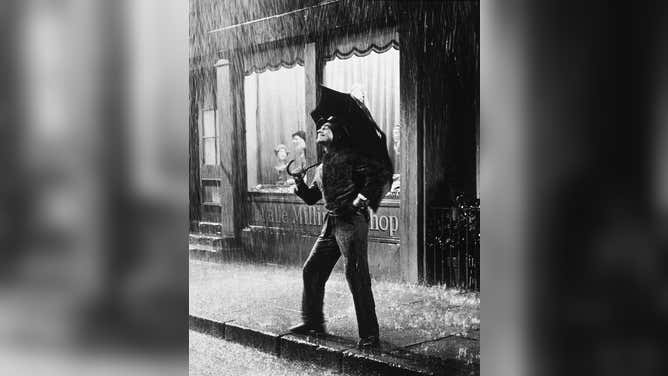
A light casts a glow on Gene Kelly's face as he stands in the "rain" in this production still.
(MGM Studios / Hulton Archive / Getty Images)
"So, he's dancing in this sort of watered down milk as he's going along," Willeman said.
In the scene, Kelly’s character is initially worried about getting wet in the rain, but then changes his tune.
"I think it's so emblematic of the point in the film that he has found this girl that he just adores," Willeman said. "He's like, 'I'm so head over heels in love with this girl that it doesn't matter that it's raining, and I'm getting wet. All I see are sunny skies.'"
The splashy comeback
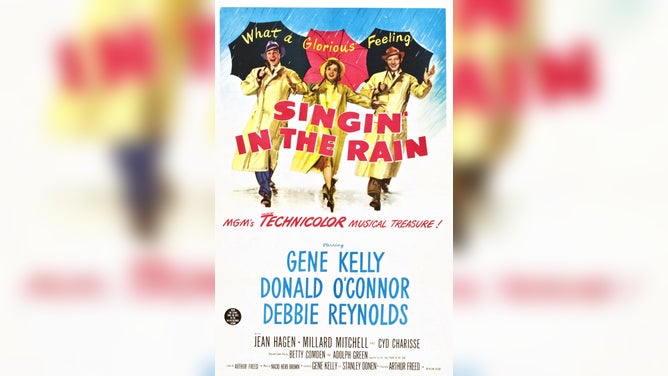
Movie poster for "Singin' in the Rain".
(Universal History Archive / UIG / Getty Images)
Such an iconic scene was one of many in "Singin’ in the Rain", as the movie became a hit.
"It was MGM's big musical treat for that year," Willeman said. "It was very well received — a very popular film; got people away from their TV sets and back into the theaters."
According to Willeman, the movie industry was losing some its audiences to a new form of entertainment at the time.
"Television was keeping people home," he said. "That's another reason why this movie is such a big deal and why it's in color and why it is so splashy and spectacular — the movies realized they had to get people away from their video boxes at home and back into the theaters and give them something they couldn't see at home. "
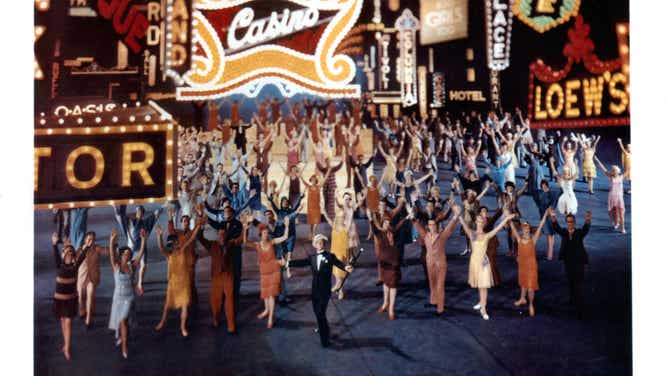
Standing front and center, Gene Kelly sings with an army of fast steppers in a scene from the film "Singin' In The Rain". Colorful, bombastic scenes like this enticed audiences back into the theater.
(Metro-Goldwyn-Mayer / Getty Images)
Because of this, movie musicals grew with their production becoming ever more elaborate.
"You go to see a "Singin’ in the Rain" or something similar because, you're just not going to get this on TV," Barton said. "On TV, it would be black and white, it would be a tiny screen, the sound would be tinny, maybe even a little static if your reception wasn't good."
"Singin’ in the Rain" provided a vibrant alternative.
"This would still get people out of the house," Barton said. "It was something special."
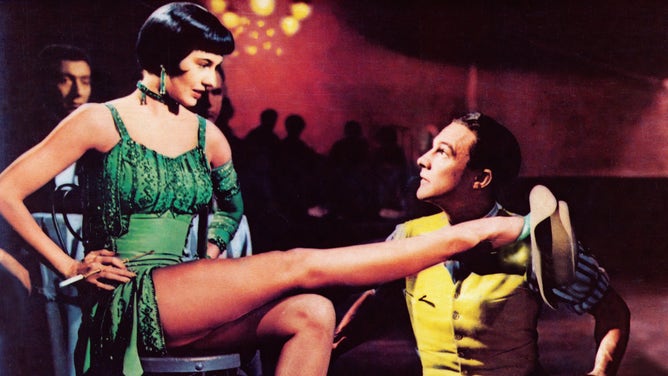
Rich colors paint the screen as Gene Kelly dances with actress Cyd Charisse in "Singin' in the Rain". By the time the film premiered, studios filmed their movies in color to pull audiences away from their black and white TVs.
(Film Publicity Archive / United Archives / Getty Images)
As much as "Singin’ in the Rain" helped revive the public’s interest in going to the movies, it also revived and popularized its namesake song first released over 20 years before.
"When it becomes a hit again in the film in 1952, I think it has a special meaning for people who remembered it the first time," Barton said. "It was like, ‘Oh, that song? Everything was so wonderful.’ It's what you wanted to remember of the 1920s."
The movie also introduced the song to a new generation in a whole different light.
"It's as though the song was waiting for this," Barton said. "That's why we remember Gene Kelly in the rain with the umbrella dancing down the street."
Happy again
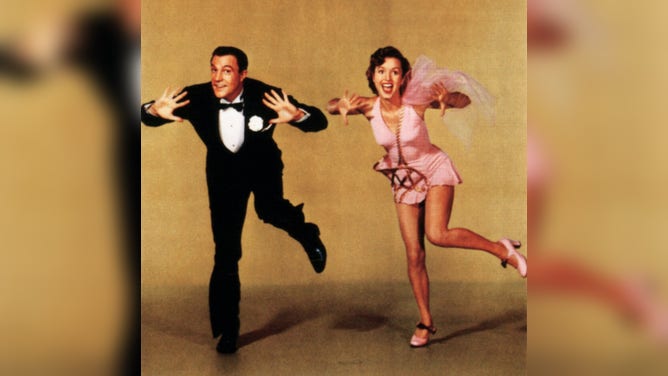
Gene Kelly and Debbie Reynolds dance in "Singin' in the Rain". In the movie, Kelly plays Don Lockwood, who is head over heels for Reynolds's character.
(LMPC / Getty Images)
In the 70 years since the premiere of "Singin’ in the Rain," the film continues to make a lasting impact.
"For me, I think it's because it's so well-made. Everything works so well in that film — the jokes work, the drama works, the editing is good, color is beautiful, the direction is great," Willeman said, adding that actors Gene Kelly, Debbie Reynolds and Donald O'Conner were a perfect triumvirate of talent.
Because of its cultural significance, the film was inducted into the Library of Congress National Film Registry during the registry’s very first year.

Kelly, Reynolds and O'Connor are pictured on this advertisement for "Singin' in the Rain". Just as significant in the film is its use of technicolor, which is noted on the black umbrella on the left side.
(Film Publicity Archive / United Archives / Getty Images)
"What that means is that it is the Library of Congress’s job to make sure that that film continues to exist," Willeman said.
And now, over 90 years since the song’s initial debut, its chipper tunes and lyrics about love and happiness still resonate with listeners.
"I think it's the paradox," Barton said. "There are lots of songs that deal with rain in one way or another, but singing in the rain seems like a silly thing to do. But also, I suppose, it's a carefree thing."
"You're so happy, you'll sing in the rain — why not?"
